- Home
- Susan Wittig Albert
The Tale of Hawthorn House
The Tale of Hawthorn House Read online
Table of Contents
Title Page
Copyright Page
Dedication
Chapter 1 - The Village Goes to a Fête
Chapter 2 - Village Affairs, from Other Points of View
Chapter 3 - “No More Babies!”
Chapter 4 - Miss Potter Is Astonished
Chapter 5 - The True Tale of Jemima Puddle-duck
Chapter 6 - Miss Potter Makes a Special Delivery
Chapter 7 - Where Emily Went and What She Found There
Chapter 8 - Jemima Counts to Ten
Chapter 9 - In Which Miss Potter Learns a Shocking Truth
Chapter 10 - The Fox and the Badger
Chapter 11 - Captain Woodcock Consults
Chapter 12 - Beatrix Says Goodbye
Chapter 13 - Major Kittredge Takes a Major Risk
Chapter 14 - The Village Is Fully Informed
Chapter 15 - Miss Potter and Miss Woodcock Go Calling
Chapter 16 - At Miss Pennywhistle’s Select Establishment for Young Ladies of ...
Chapter 17 - The Hand-Woven Cover: Part One
Chapter 18 - The Hand-Woven Cover: Part Two
Chapter 19 - Captain Woodcock Investigates
Chapter 20 - The Hawthorn Folk
Chapter 21 - Deirdre Receives a Letter
Chapter 22 - Kep Turns Detective
Chapter 23 - Miss Potter Goes to London
Chapter 24 - The Fox, the Duck, and the Shot in the Night
Chapter 25 - Captain Woodcock Learns the Latest
Chapter 26 - Miss Woodcock Takes a Stand
Chapter 27 - Miss Potter Takes Charge
Chapter 28 - Jemima Takes Stock
Chapter 29 - Miss Barwick Delivers
Chapter 30 - Dimity Deals with Eggs
Chapter 31 - And More Eggs!
Chapter 32 - Tortoises?
Chapter 33 - The Tale of Hortense the Tortoise
Chapter 34 - Captain Woodcock Concludes
Chapter 35 - Miss Potter Tells a Story
Chapter 36 - Dinner at Tower Bank House
Chapter 37 - The Professor Concludes
HISTORICAL NOTE
Resources
Recipes from the Land Between the Lakes
Glossary
China Bayles Mysteries by Susan Wittig Albert
THYME OF DEATH
WITCHES’ BANE
HANGMAN’S ROOT
ROSEMARY REMEMBERED
RUEFUL DEATH
LOVE LIES BLEEDING
CHILE DEATH
LAVENDER LIES
MISTLETOE MAN
BLOODROOT
INDIGO DYING
AN UNTHYMELY DEATH
A DILLY OF A DEATH
DEAD MAN’S BONES
BLEEDING HEARTS
SPANISH DAGGER
CHINA BAYLES’ BOOK OF DAYS
With her husband, Bill Albert, writing as Robin Paige
DEATH AT BISHOP’S KEEP
DEATH AT GALLOWS GREEN
DEATH AT DAISY’S FOLLY
DEATH AT DEVIL’S BRIDGE
DEATH AT ROTTINGDEAN
DEATH AT WHITECHAPEL
DEATH AT EPSOM DOWNS
DEATH AT DARTMOOR
DEATH AT GLAMIS CASTLE
DEATH IN HYDE PARK
DEATH AT BLENHEIM PALACE
DEATH ON THE LIZARD
Beatrix Potter Mysteries by Susan Wittig Albert
THE TALE OF HILL TOP FARM
THE TALE OF HOLLY HOW
THE TALE OF CUCKOO BROW WOOD
THE TALE OF HAWTHORN HOUSE
Nonfiction books by Susan Wittig Albert
WRITING FROM LIFE
WORK OF HER OWN
THE BERKLEY PUBLISHING GROUP
Published by the Penguin Group
Penguin Group (USA) Inc.
375 Hudson Street, New York, New York 10014, USA
Penguin Group (Canada), 90 Eglinton Avenue East, Suite 700, Toronto, Ontario M4P 2Y3, Canada
(a division of Pearson Penguin Canada Inc.)
Penguin Books Ltd., 80 Strand, London WC2R 0RL, England
Penguin Group Ireland, 25 St. Stephen’s Green, Dublin 2, Ireland (a division of Penguin Books Ltd.)
Penguin Group (Australia), 250 Camberwell Road, Camberwell, Victoria 3124, Australia
(a division of Pearson Australia Group Pty. Ltd.)
Penguin Books India Pvt. Ltd., 11 Community Centre, Panchsheel Park, New Delhi—110 017, India
Penguin Group (NZ), 67 Apollo Drive, Rosedale, North Shore 0745, Auckland, New Zealand
(a division of Pearson New Zealand Ltd.)
Penguin Books (South Africa) (Pty.) Ltd., 24 Sturdee Avenue, Rosebank, Johannesburg 2196,
South Africa
Penguin Books Ltd., Registered Offices: 80 Strand, London WC2R 0RL, England
This book is an original publication of The Berkley Publishing Group.
This is a work of fiction. Names, characters, places, and incidents either are the product of the author’s imagination or are used fictitiously, and any resemblance to actual persons, living or dead, business establishments, events, or locales is entirely coincidental. The publisher does not have any control over and does not assume any responsibility for author or third-party websites or their content.
Frederick Warne & Co Ltd is the sole and exclusive owner of the entire rights titles and interest in and to the copyrights and trade marks of the works of Beatrix Potter, including all names and characters featured therein. No reproduction of these copyrights and trade marks may be made without the prior written consent of Frederick Warne & Co Ltd.
PUBLISHER’S NOTE: The recipes contained in this book are to be followed exactly as written. The publisher is not responsible for your specific health or allergy needs that may require medical supervision. The publisher is not responsible for any adverse reactions to the recipes contained in this book.
Copyright © 2007 by Susan Wittig Albert.
All rights reserved.
No part of this book may be reproduced, scanned, or distributed in any printed or electronic form without permission. Please do not participate in or encourage piracy of copyrighted materials in violation of the author’s rights. Purchase only authorized editions.
The name BERKLEY PRIME CRIME and the BERKLEY PRIME CRIME design are trademarks belonging to Penguin Group (USA) Inc.
Library of Congress Cataloging-in-Publication Data
Albert, Susan Wittig.
The tale of Hawthorn House / Susan Wittig Albert.
p. cm. — (The cottage tales of Beatrix Potter)
eISBN: 9781101375853
1. Potter, Beatrix, 1866-1943—Fiction. 2. Women authors—Fiction. 3. Women artists—
Fiction. 4. Foundlings—Fiction. 5. Villages—Fiction. 6. Manors—England—Fiction. 7.
England—Fiction. I. Title.
PS3551. L2637T348 2007
813’ .54—dc22 2007002729
http://us.penguingroup.com
To Linda Lear,
with grateful thanks for her sustaining friendship
The most wonderful and the strongest things in the world, you know, are just the things which no one can see. There is life in you; and it is the life in you which makes you grow, and move, and think: and yet you can’t see it. And there is steam in a steam-engine; and that is what makes it move: and yet you can’t see it; and there may be fairies in the world, and they may be just what makes the world go round to the old tune of
C’est l’amour, l’amour, l’amour
Qui fait la monde à la ronde:
and yet no one may be able to see them except those whose hearts are going round to that same tune. At all events, we will make believe t
hat there are fairies in the world. It will not be the last time by many a one that we shall have to make believe. And yet, after all, there is no need for that. There must be fairies; for this is a fairy-tale: and how can one have a fairy-tale if there are no fairies?
Charles Kingsley, The Water Babies, 1863
Cast of Characters
(* indicates an actual historical person or creature)
People of the Land Between the Lakes
Beatrix Potter* is best known for the series of children’s books that began with The Tale of Peter Rabbit (1902). She lives with her parents in London and owns Hill Top Farm, in the Lake District village of Near Sawrey. Mr. and Mrs. Jennings live in the Hill Top farmhouse with their three children: Sammy, Clara, and Baby Pearl. They manage the farm while Miss Potter is in London.
Sarah Barwick (also known as Sarah Scones) lives in Anvil Cottage, at the corner of Market Street and the Kendal Road, where she operates her bakery.
Captain Miles Woodcock is Justice of the Peace for Sawrey District. He lives in Tower Bank House with his sister, Dimity Woodcock, who has assumed temporary care of Baby Flora, a foundling child. Elsa Grape keeps house and cooks for the Woodcocks.
Major Christopher Kittredge is the master of Raven Hall and an admirer of Dimity Woodcock.
Will Heelis,* Captain Woodcock’s friend, is a solicitor who lives in the nearby market town of Hawkshead. He is the captain’s choice for a husband for Dimity Woodcock.
Lucy Skead is the village postmistress. She lives at Low Green Gate Cottage and dispenses gossip with the post. Other notorious village gossipers: Mathilda Crook, of Belle Green; Hannah Braithwaite, of Croft End Cottage (wife of the village constable); Lydia Dowling, of Meadowcroft Cottage (the village shop), and her niece and helper Gladys; and Bertha Stubbs, who works at Sawrey School.
Mr. and Mrs. Barrow operate the village inn and pub, the Tower Bank Arms, where they live with their children.
Jane Crosfield, a weaver, lives at Holly How Farm, on the Tidmarsh Manor estate. Her nephew, Jeremy Crosfield, fourteen, attends boarding school in Ambleside.
Mrs. Graham, a midwife, lives with her husband and children at Long Dale Farm, on Glade Lane. Her old mother, Mrs. Frost, a former weaver, lives with them.
Mrs. Janet Allen lives at Willow Bank Cottage on Graythwaite Farm. She keeps exotic pets, including a pair of leopard tortoises named Hortense and Horatio.
Deirdre Malone, thirteen, lives with Mr. and Mrs. Sutton and their eight children at Courier Cottage. Deirdre takes care of the children, and Mrs. Pettigrew cooks and keeps house.
Emily Shaw was formerly a maid at Tidmarsh Manor, then employed by Miss Rowena Keller at Hawthorn House, and lastly by Miss Pennywhistle, at Miss Pennywhistle’s Select Establishment for Young Ladies, in London.
Caroline Longford, thirteen, lives with her grandmother, Lady Longford, at Tidmarsh Manor. She has a new governess, Miss Cecily Burns. Also at Tidmarsh Manor: Mrs. Beever, the cook-housekeeper, and Mr. Beever, the gardener and coachman.
Other Creatures Who Inhabit the Land
Between the Lakes
Mrs. Overthewall is one of the Thorn Folk, who were evicted from the hawthorn trees at Hawthorn House.
Tabitha Twitchit, who lives with the Crooks at Belle Green, is the senior village cat. A calico with an orange and white bib, she expects respect and sometimes gets it.
Crumpet is a gray tabby who makes her home with the Stubbses in Lakefield Cottage, and believes that she is next in line for senior cat status.
Rascal, a Jack Russell terrier, lives with the Crooks at Belle Green, but spends most of his time organizing and managing village affairs.
Jemima Puddle-duck is the maternally minded duck in Miss Potter’s book, The Tale of Jemima Puddle-Duck (1908). Mr. Reynard Vulpes, Esq., of Foxglove Close (who also appears in Miss Potter’s book), is her ardent admirer.
Kep,* a collie, is the new Top Dog at Hill Top Farm. Mustard , an old yellow dog, helps out when he is feeling fit. Other barnyard animals include Aunt Susan and Dorcas, the Berkshire pigs; Kitchen the Galway cow and Blossom, her calf; Winston the pony; Boots, Shawl, and Bonnet, the superfluous hens assigned to hatching ducklings; and various Puddle-ducks. Tibbie* and Queenie* and their Herdwick lambs enjoy the freedom of Hill Top Farm.
Jackboy the Magpie carries tales, but his Cockney rhyming slang makes it hard to understand them.
Bosworth Badger XVII lives in The Brockery on Holly How with an ever-changing variety of residents and guests. Bosworth maintains the History of the Badgers of the Land Between the Lakes and its companion work, the Holly How Badger Genealogy.
Professor Galileo Newton Owl, D.Phil., is a tawny owl who conducts advanced studies in astronomy and applied natural history from his home in a hollow beech at the top of Cuckoo Brow Wood.
PROLOGUE
Hawthorn House
THURSDAY, 20 AUGUST, 1908
From the very beginning, Emily had been uneasy at Hawthorn House.
Granted, she was an imaginative girl whose fancies sometimes ran away with her common sense. But her feelings about Hawthorn House went beyond fancy—or so it seemed to Emily. The house was secretive, as if it were keeping a great many things to itself, things that ought to be revealed. It sat on the side of a hill overlooking the lake, but not proudly, the way a hillside house ought to sit. Instead, it seemed hunched and huddled, as if it were too troubled by interior matters to look out across the lake.
Or perhaps it was merely that Hawthorn House did not want anybody to look at it. It was, after all, very ugly. The walls came together at the wrong angles, the slate roof was studded with towers and turrets and chimney pots and gables, the windows were in all the wrong places, and the garden was overgrown with nettle and thistle. No one had lived in Hawthorn House in years and years, for one very simple reason.
It was haunted.
Oh, not in the usual way. No long-dead ladies dressed in white, or headless monks or bearded gentlemen without arms. It was worse than that—oh, much, much worse. Hawthorn House was haunted by dead dreams. It had been cursed by its evicted tenants, who vowed that the house would never again—
But we’ll come to that later. The baby is crying, and we must get on with our story.
In fact, Baby Flora (who was generally quiet and well behaved, for one so young) had been crying steadily in her cradle for the past hour, ever since Mrs. Graham had brought her back. It was now one in the afternoon, and not even her bottle had brought her any comfort.
And Emily—who was pacing up and down the kitchen, biting her lip and wringing her hands—was crying, too, mostly in sympathy with Baby Flora, but also in vexation and disappointment. At this very hour, she should have been at Windermere Station, boarding the afternoon train for London, where Miss Keller was waiting. Instead, she was marooned here at Hawthorn House, which (even if nothing had gone wrong) would have been a very unpleasant prospect, for the place was gloomy and isolated and ugly. And haunted.
Emily shivered at the word, pushing it away, out of her mind. The situation was bad enough without thinking about that, for everything had gone wrong. She was here by herself, with no hope at all of getting away. At the thought, the tears came even more freely—tears, it must be admitted, of self-pity.
Now, before you think too ill of our Emily, I must tell you that she believed little Flora to be the dearest thing imaginable. While Emily was waiting for the baby to be born, she had knitted tiny caps in baby colors: pink for a girl, blue for a boy, yellow for both. She had been the first to cradle the newborn in her arms, to kiss the corner of her sweet rosebud mouth and whisper a welcome into her tiny pink ear. She had slept beside Flora’s cradle and got up in the night when Flora fretted. And in the fortnight since the baby’s birth, she had willingly learnt all sorts of new and necessary motherings, from changing baby’s nappies to administering bottle and bath.
But I must also tell you that Emily was scarcely sixteen and still a girl, for all that she had the form and face o
f a young woman. And even though she had understood what she was letting herself in for (as much as one can be said to understand a new situation before one finds oneself in it up to one’s pretty chin), Emily’s romantic mind had painted the prospective experience in unmistakably rosy hues. But she had made mistakes, some of them quite regrettable.
For one thing, she had trusted the gypsy lad to whom she had given her heart when she met him at market some months before. But he did not love her as faithfully as he had promised. He had gone to the south of England to work in the hops fields without a goodbye and she had not had a letter from him since, not even so much as a ha’penny postcard.
And for another, she had trusted Mrs. Graham, who had agreed to take the baby when Miss Keller returned to London, so that Emily could follow. Emily would much rather have taken Flora with her, of course, but Miss Keller said that was out of the question. So Emily had no choice, and really, when you stopped to think of it, Flora would be happier growing up in the country, rather than the city. But London—well, London was Emily’s dearest dream. London, and the blue velvet dress that Miss Keller had mentioned, and the smart blue boots that would go with the dress, and the white fur muff. Oh, such joy!
But Mrs. Graham had let her down, just like the gypsy lad. The City seemed as far away as the moon, and the dress, boots, and muff might as well be on Mars. Emily felt terribly betrayed, as you would, too, I daresay, if you had your heart set on going to London and learnt, at the very last minute, that you could not go.
So I’m sure you can understand why Emily was crying. Miss Keller had already left for London, and was expecting her. Mrs. Hawker, the cook, had gone away, too, to take care of her sister. Mrs. Hawker was deaf as a doorpost and could not be counted on for ordinary conversation, but at least she had been another presence in the house. Deirdre Malone hadn’t dropped in lately, either. Deirdre was too young to be a true confidante, but she had been a willing listener, even if Emily couldn’t tell her the whole truth.

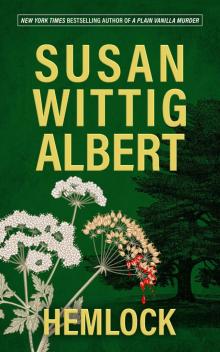 Hemlock
Hemlock Chile Death
Chile Death The Tale of Briar Bank
The Tale of Briar Bank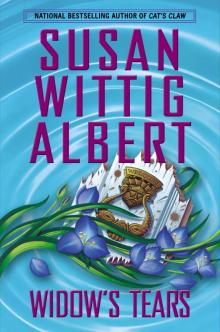 Widow's Tears
Widow's Tears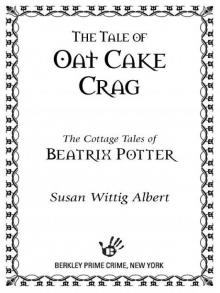 The Tale of Oat Cake Crag
The Tale of Oat Cake Crag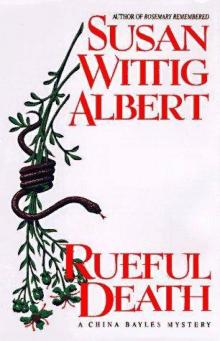 Rueful Death
Rueful Death Bittersweet
Bittersweet The Darling Dahlias and the Poinsettia Puzzle
The Darling Dahlias and the Poinsettia Puzzle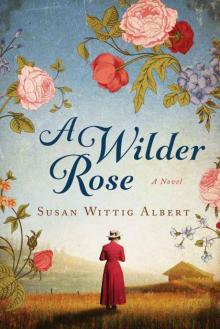 A Wilder Rose: A Novel
A Wilder Rose: A Novel Spanish Dagger
Spanish Dagger The Darling Dahlias and the Texas Star
The Darling Dahlias and the Texas Star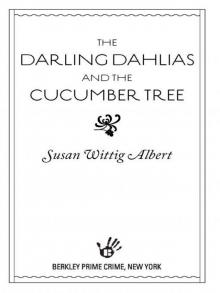 The Darling Dahlias and the Cucumber Tree
The Darling Dahlias and the Cucumber Tree China Bayles' Book of Days
China Bayles' Book of Days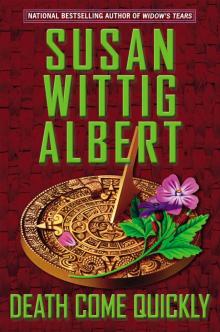 Death Come Quickly
Death Come Quickly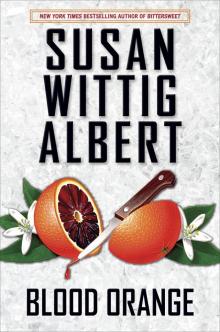 Blood Orange: A China Bayles Mystery
Blood Orange: A China Bayles Mystery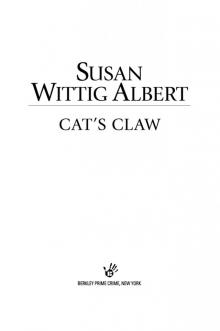 Cat's Claw
Cat's Claw The Darling Dahlias and the Naked Ladies
The Darling Dahlias and the Naked Ladies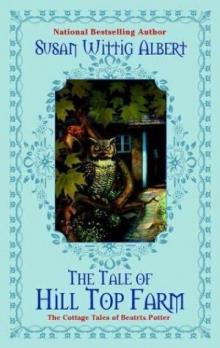 The Tale of Hill Top Farm
The Tale of Hill Top Farm The Darling Dahlias and the Confederate Rose
The Darling Dahlias and the Confederate Rose The Darling Dahlias and the Silver Dollar Bush
The Darling Dahlias and the Silver Dollar Bush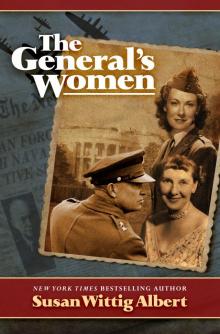 The General's Women
The General's Women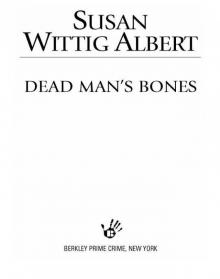 Dead Man's Bones
Dead Man's Bones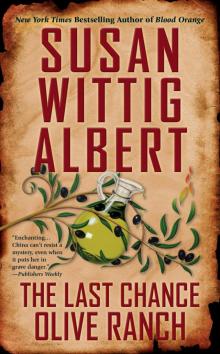 The Last Chance Olive Ranch
The Last Chance Olive Ranch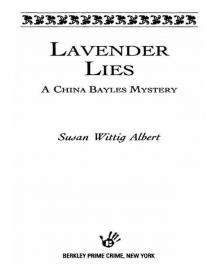 Lavender Lies
Lavender Lies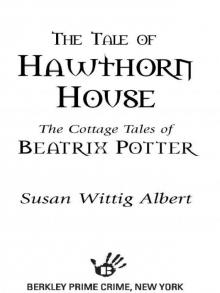 The Tale of Hawthorn House
The Tale of Hawthorn House The Tale of Castle Cottage
The Tale of Castle Cottage Rosemary Remembered - China Bayles 04
Rosemary Remembered - China Bayles 04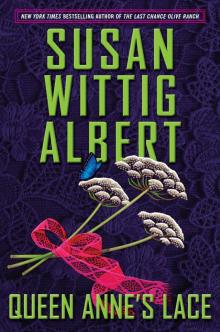 Queen Anne's Lace
Queen Anne's Lace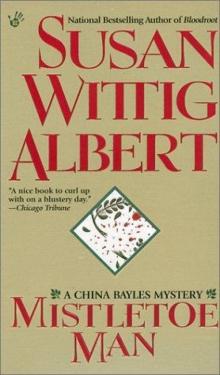 Mistletoe Man - China Bayles 09
Mistletoe Man - China Bayles 09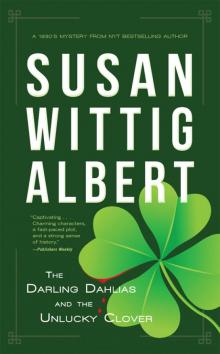 The Darling Dahlias and the Unlucky Clover
The Darling Dahlias and the Unlucky Clover Mourning Gloria
Mourning Gloria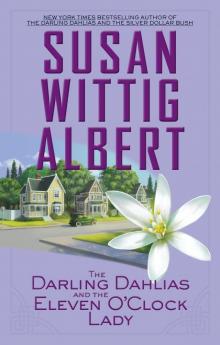 The Darling Dahlias and the Eleven O'Clock Lady
The Darling Dahlias and the Eleven O'Clock Lady